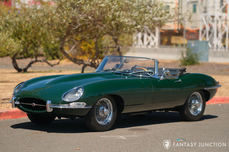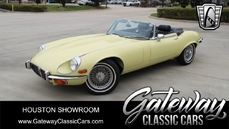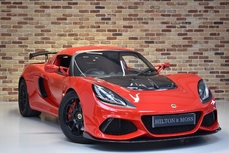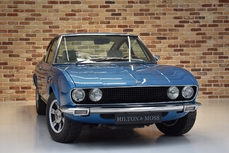Jaguar E-type 1963
Allgemeine Beschreibung :
Dubbed by Enzo Ferrari as ‘the most beautiful car in the world’, the series 1 E-Type is without doubt an icon of design and one the most desirable classic sports cars ever made. With values for very early cars soaring as a result, unrestored E-Types are becoming rarer by the minute, and finding a “virgin” car which has never been welded and still wearing factory paint a near impossible feat. One of only 7,600 series one 3.8 coupes made she is a rare early “survivor” car and such a worthy candidate to have bestowed upon it the finest restoration that is possible.
This recent discovery we have here is almost the holy grail of “barn find” classic cars. A low mileage, unmolested, original high spec 1963 car that is almost entirely rust free, and which also carries an unusual backstory.
Back in the early sixties the E-Type carried a mystique and unparalleled desirability. The Jaguar E-Type was the sports car that put the swinging into the ‘swinging sixties’, and was the sexy feline that transported a galaxy of stars from Brigitte Bardot to George Best, Tony Curtis to Donald Campbell and Roy Orbison to Steve McQueen.This did give the E-type a real price premium in the USA however, and was therefore quite an expensive proposition when you visited Jaguar cars New York to order or buy an E-Type. The first owner of this car here found a clever way around this.
A resident of the UK at the time during the autumn of 1963, M.Lubin was planning his relocation to the west coast of the USA and decided an E-Type coupe would be his car of choice. After enquiries were no doubt made as to ordering a car actually in the USA, M.Lubin got clever.He approached Jaguar Coventry and ordered himself this car, an Opalescent golden sand, with red leather interior 3.8 coupe to his exact specification. The request was made to fit export spec rear light and front indicators, and fit the steering column and pedal box to the left hand side of the vehicle, and dash mods to suit. The Jaguar E-Type is one of very few cars that were designed to be either LHD or RHD and that that decision could be made late on during the assembly stage of production, due to its design. The car was adorned a LHD chassis designation number of 889506. The bulkhead of the car is near identical side to side and thus unbolting parts from one side, and primitively re-bolting it the other side is quite straightforward – more on this later…
The car was finished in 26th November 1963 and was adorned with the desirable early Coventry registration plate of ‘6905WK’. This meant that as his own personal car, registered to him in the UK, the car could be exported as a personal vehicle and avoid a huge purchase tax of buying it in the USA! Very shrewd indeed.
Jaguar cars then assisted with transportation to the USA and handed the car over to M.Lubin at their New York dealership. After he had finished his relocation and eventually settled in California, the car would have spent all but its very first few weeks in a hot and sunny state which is so kind to bodywork, and so revered by collectors as finding a “California car”, such is the survival condition of such cars body wise.
So here in California the car remained, and only saw use of just 70k miles up to 1975, at which point the car was laid up, we are told, owing to a running problem. The car apparently changed ownership and soon went for repairs, receiving a basic colour change blow over in a maroon colour as well as works to the necessary repairs to the engine.Luckily for us this was such a basic paint job that the door shuts were not done, nor any returns or inside of panels, these are on factory first paint. Even the number plate at the rear was masked around!Paint depth readings indicated to us that there was very little material on the car, and absolutely no body filler, and actually the maroon paint is flaking off to reveal the original gold hue underneath, which hasn’t even been keyed up – hence the paint flake. Their laziness is to our massive gain 40 years later when we are looking at perhaps the most sound unrestored E-Type we have ever encountered.In 1979, the car went into long term storage for reasons unknown. This preserved the car so well right up until the story continues nearly 4 decades later…..
Recently discovered and re-patriated, the car was immediately re-instated onto its original reg, and this is where we are today, and seeing the car in the flesh does really take you aback at first. This car is so original it defies belief, and these just do not turn up like this.
As the car was UK supplied, our intention is to restore the car to completely original to factory spec, retaining the colourway but refitting the car as RHD. It’s fair to say that the whole car will need a degree of recommissioning after all these years. However, the attraction of a relatively low mileage Series one E-Type that’s so far only dwelt in the rust-free environment of California is self-evident, especially one that was UK supplied and first registered.
The finished car will be so detail perfect, right down to every spot weld and panel detail that you never usually get to see on any restored E-Type. Simply because a large degree of panel replacement is necessary on series one’s during restoration. This means that you usually end of with a car with replicated welds and non jaguar panels, whereas this car requires NO panel replacement, just repairs, leaving us a factory welded shell, with original Jaguar sheet metal throughout. Almost unrepeatable.Completely matching numbers throughout including the gearbox of course, the car has a heritage certificate to back the above, and surely has to be a candidate for a concours winner post restoration.
This exciting rare opportunity can also be restored to your own specification if you wish, please speak to a member of our team.
https://hiltonandmoss.com/cars/jaguar-e-type-3/
1963 Jaguar E-type is listed verkauft on ClassicDigest in Stansted by Hilton Moss for Preis nicht verfügbar.
Fakten der Auto
Karosserietyp : Auto Marke : Jaguar Modell : E-type Hubraum : 3.8 Modelljahr : 1963 Lage : Stansted
Verkauft
Angaben Zum Verkäufer
Verkauft
People who viewed this Jaguar E-type also viewed similar Jaguar listed at ClassicDigest
Other cars listed for sale by this dealer
über Jaguar
Ah, die Geschichte von Jaguar, von seinen Anfängen als SS Cars Ltd. bis hin zum Höhepunkt mit dem D-Typ und der Straßenversion des ikonischen E-Typs. An dieser Erzählung haftet etwas zutiefst Britisches, und ich werde sie erzählen, wie es ein britischer Journalist tun würde.Die Anfänge:
Unsere Reise in die Welt von Jaguar beginnt in den 1930er Jahren, als ein Unternehmen namens SS Cars Ltd. auftauchte. Trotz des unglücklichen Zufalls ihrer Initialen, die mit den aufkommenden politischen Spannungen in Europa zusammenfielen, begannen sie, stilvolle und leistungsorientierte Autos herzustellen. Der SS 100, der 1936 eingeführt wurde, war ein Symbol für Eleganz und Geschwindigkeit und legte den Grundstein für das, was Jaguar werden sollte.
Die Geburt von Jaguar:
Als der Schatten des Zweiten Weltkriegs näher rückte, entschied sich SS Cars Ltd. klugerweise, sich von den SS-Initialen zu distanzieren. So wurden sie 1945 offiziell zu Jaguar Cars Ltd., ein Name, der bald für britischen Luxus und Leistung stehen würde.
Die XK-Serie:
Die Nachkriegszeit von Jaguar brachte uns den XK 120, eine wahre Sensation im Jahr 1948. Mit seinem schlanken Design und einem leistungsstarken 3,4-Liter-Sechszylindermotor wurde er zum schnellsten Serienauto der Welt. Der XK 120 war die Blaupause für das, was kommen würde - Jaguars, die Stil mit Geschwindigkeit auf einzigartig britische Weise verbanden.
Die Dominanz des D-Typs:
Dann kam der D-Typ, eine wahre Rennlegende. 1954 eingeführt, gewann er in den 1950er Jahren dreimal Le Mans und zeigte die technische Kompetenz von Jaguar. Mit seiner innovativen Monocoque-Konstruktion und der ikonischen Finne hinten war der D-Typ der Höhepunkt von Jaguars Motorsporterfolgen.
Das Auftauchen des E-Typs:
Aber der wahre Wendepunkt kam 1961 mit der Einführung des E-Typs, oft von Enzo Ferrari als "das schönste Auto, das je gebaut wurde" bezeichnet. Seine lange Motorhaube, die geschwungene Karosserie und ein 3,8-Liter-Motor, der atemberaubende Leistung lieferte, machten ihn sofort zu einem Klassiker. Der E-Typ war nicht nur ein Auto; er war ein Kunstwerk auf Rädern und konnte auf der Straße 150 Meilen pro Stunde erreichen.
Straßen- und Rennsporterfolge:
Die Schönheit des E-Typs wurde durch seine Leistung auf der Rennstrecke unterstrichen. Die leichten E-Typen waren bei verschiedenen Rennveranstaltungen besonders erfolgreich und festigten den Ruf von Jaguar als eine Kraft, mit der man im Motorsport rechnen musste.
Das Zeitalter der Raffinesse:
Je tiefer wir in die Geschichte von Jaguar eintauchen, desto mehr erkennen wir, dass die 1950er und 1960er Jahre ein Zeitalter der Raffinesse und Expansion waren. Neben dem großartigen D-Typ und dem ikonischen Aufstieg des E-Typs führte Jaguar Modelle ein, die seinen Ruf für Luxus und Leistung weiter festigten.
Der MK2:
Ende der 1950er Jahre stellte Jaguar den MK2 vor, eine Sportlimousine, die Eleganz mit Leistung vereinte. Diese elegante viertürige Limousine war sowohl bei Bankräubern als auch bei der Polizei aufgrund ihrer außergewöhnlichen Geschwindigkeit und Handhabung beliebt. Der MK2 war ein Symbol für Jaguars Fähigkeit, Raffinesse mit Leistung zu verbinden und hatte auch eine erfolgreiche Rennkarriere.
Der XJ6:
Springen wir ins Jahr 1968, als Jaguar ein Auto auf den Markt brachte, das Jahrzehnte lang Luxuslimousinen definieren würde - den XJ6. Es war ein Meisterwerk der Ingenieurkunst und des Designs, mit einem sanften Reihensechszylindermotor, unabhängiger Hinterachse und einem geräumigen, wunderschön ausgestatteten Innenraum. Der XJ6 war ein Symbol britischer Eleganz und bot eine so sanfte Fahrt, dass es schien, als würde er förmlich über die Straße gleiten. Er wurde zum Flaggschiffmodell für Jaguar und setzte den Maßstab für Luxuslimousinen und zeigte ein Maß an Raffinesse, das die Konkurrenz staunen ließ.
Die Verschmelzung von Klassik und Moderne:
Während der MK2 und der XJ6 die Evolution der Limousinen von Jaguar repräsentierten, bewahrten sie das Engagement der Marke für Leistung und Luxus. Diese Autos gehörten nicht nur auf die Rennstrecke; sie fühlten sich genauso wohl auf den Prachtstraßen wie auf einer entspannten Fahrt durch die englische Landschaft.
Die Herausforderungen des Wandels:
Dennoch sah sich Jaguar mit dem Eintritt der 1970er Jahre, wie viele britische Automobilhersteller, finanziellen Herausforderungen und Veränderungen in der Eigentümerschaft gegenüber. Die Ära von British Leyland brachte sowohl Chancen als auch Schwierigkeiten mit sich, während die Marke durch verschiedene Fusionen und Übergänge navigierte.
Das Erbe des MK2 und des XJ6, zusammen mit dem D-Typ und dem E-Typ, definiert Jaguar weiterhin als einen Hersteller, der zeitlose Eleganz mit einer Leistungsstärke vereint. Diese klassischen Modelle, ob sie über kurvige Straßen gefahren oder als Sammlerschätze geparkt werden, dienen als Zeugnis für die anhaltende Präsenz von Jaguar in der Welt der automobilen Exzellenz.
Die Jaguar-Geschichte, von ihren Anfängen als SS Cars Ltd. bis zur Schaffung von Automobilikonen wie dem E-Typ, dem MK2 und dem XJ6, ist eine Reise, die das Wesen des britischen Automobilbaus widerspiegelt - eine Mischung aus Luxus, Leistung und Stil, die nach wie vor Enthusiasten und Kenner gleichermaßen fasziniert.











